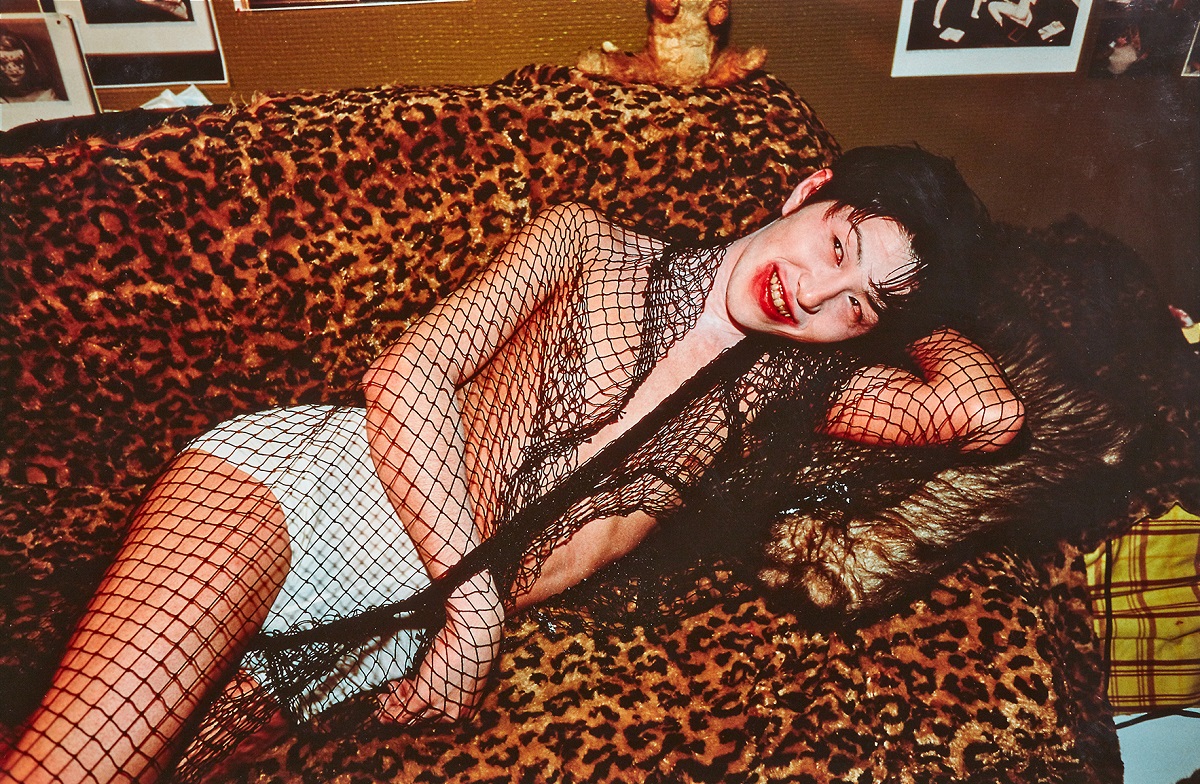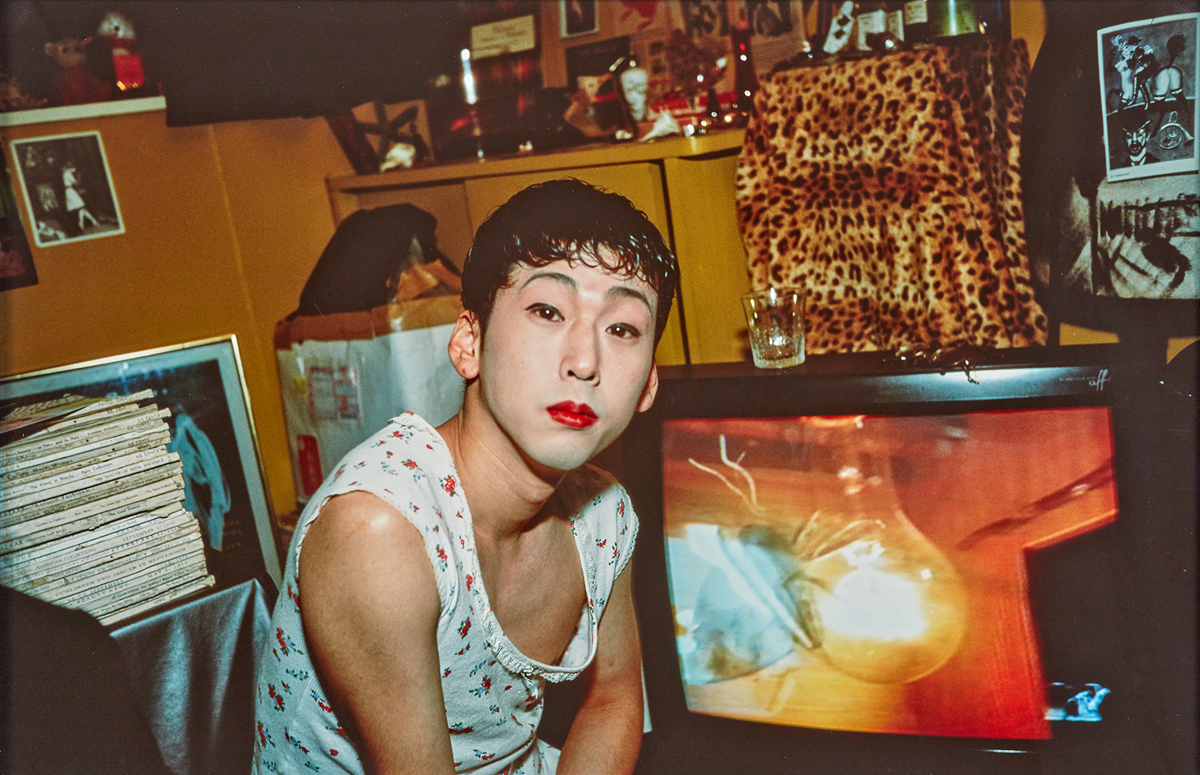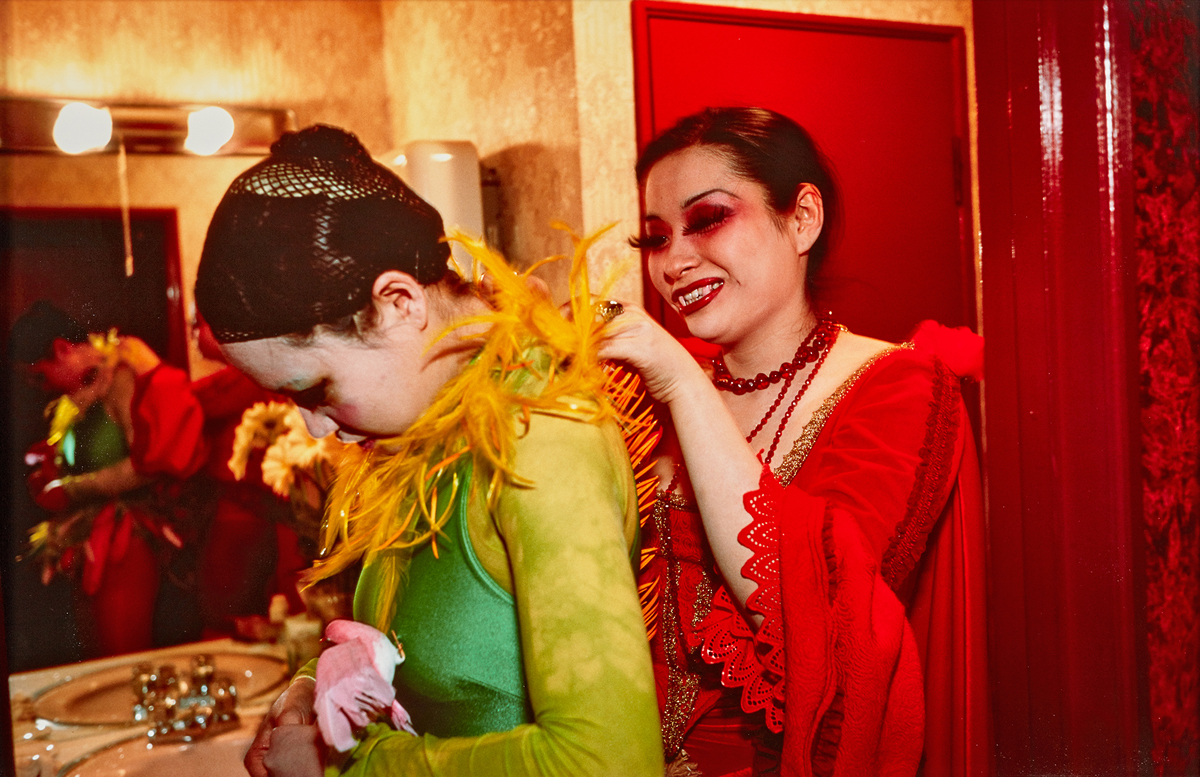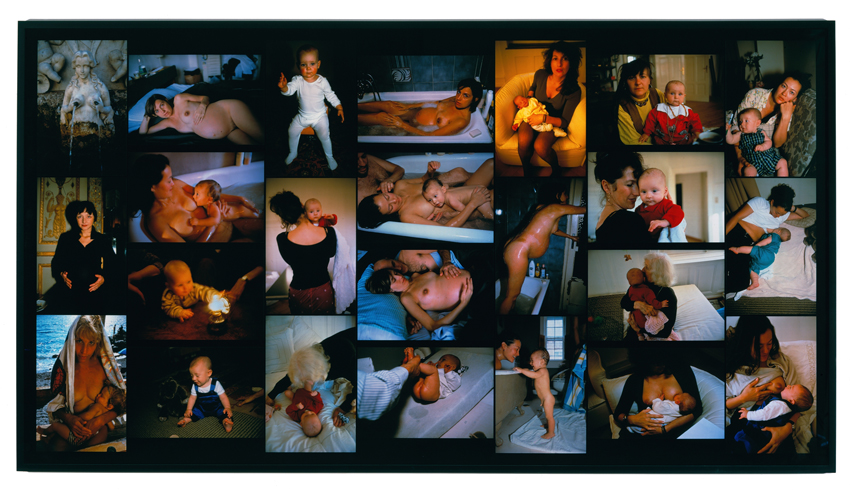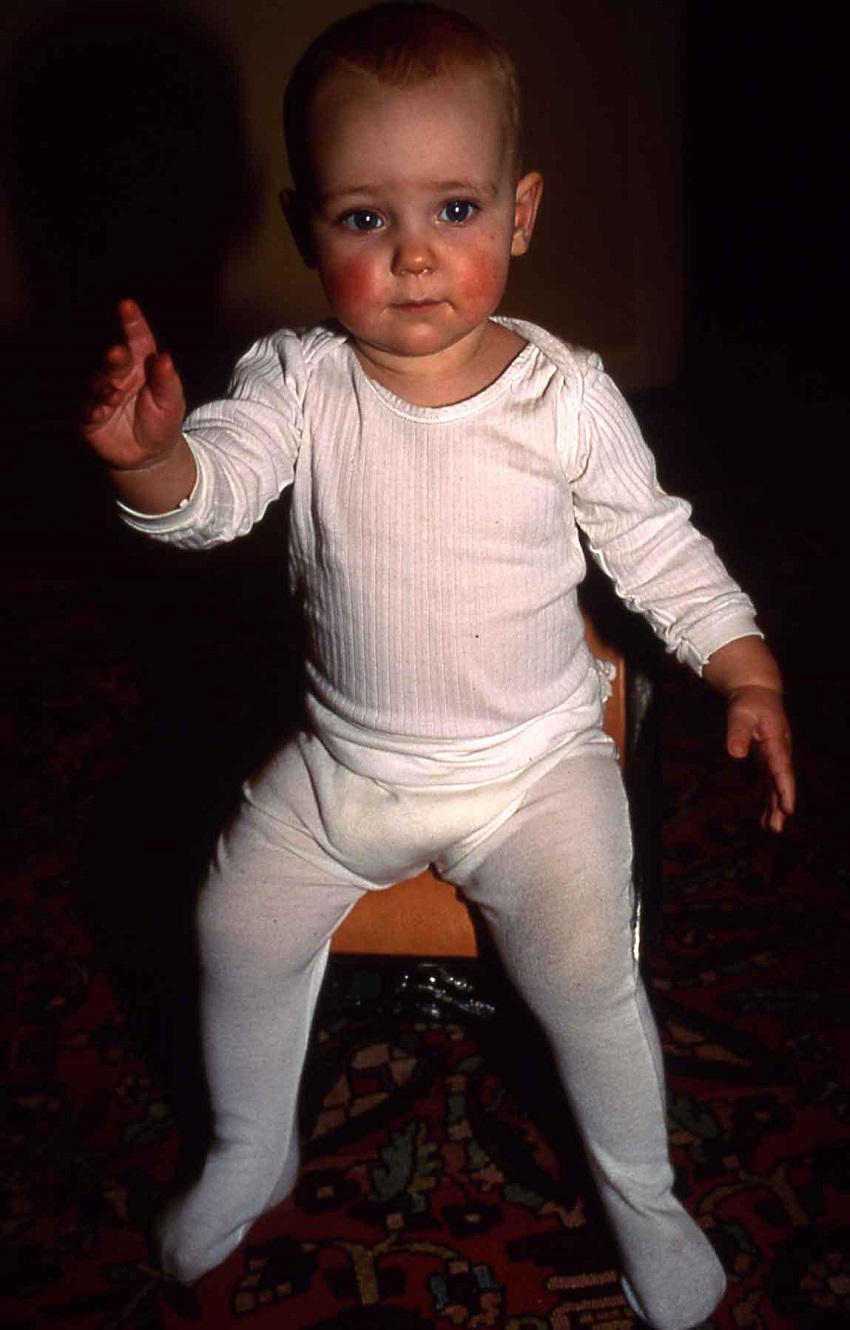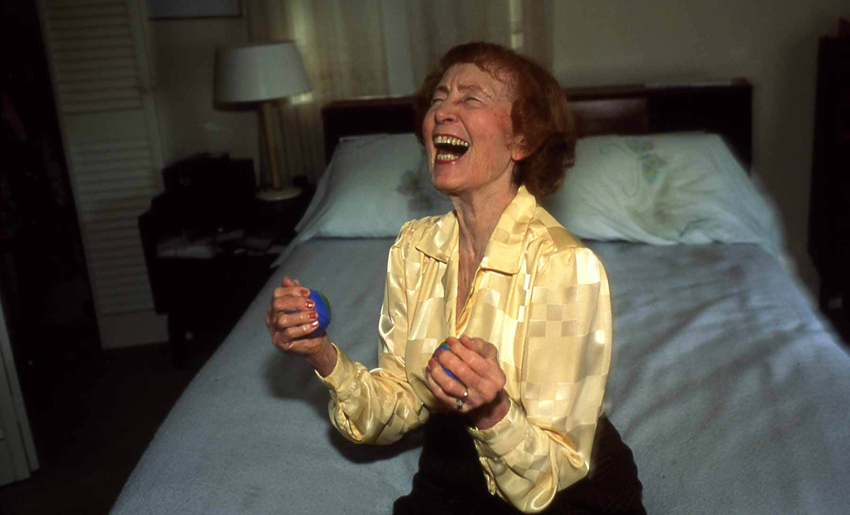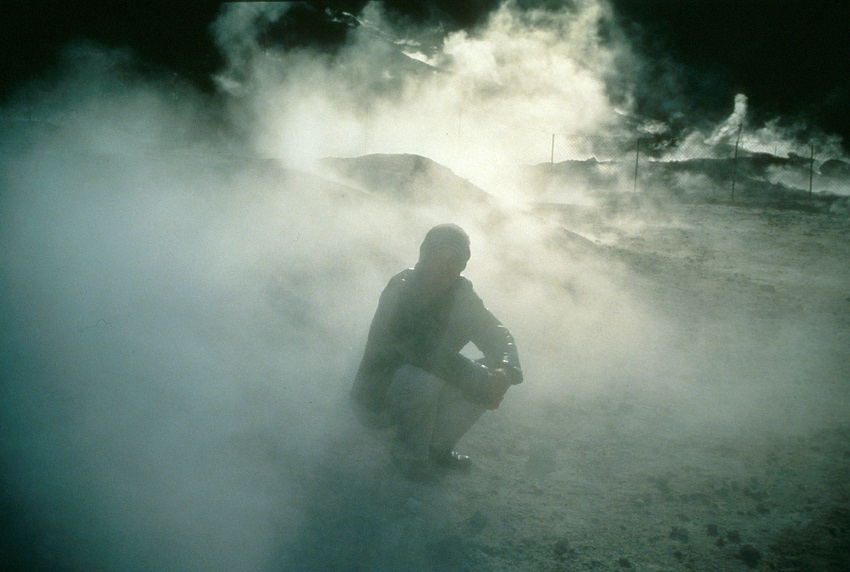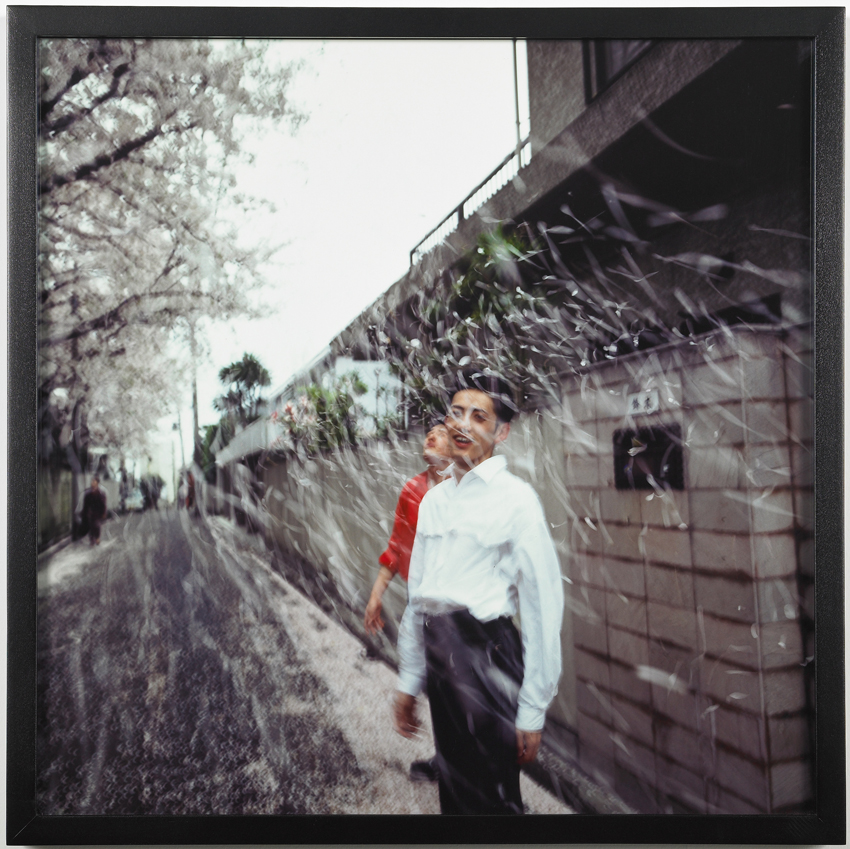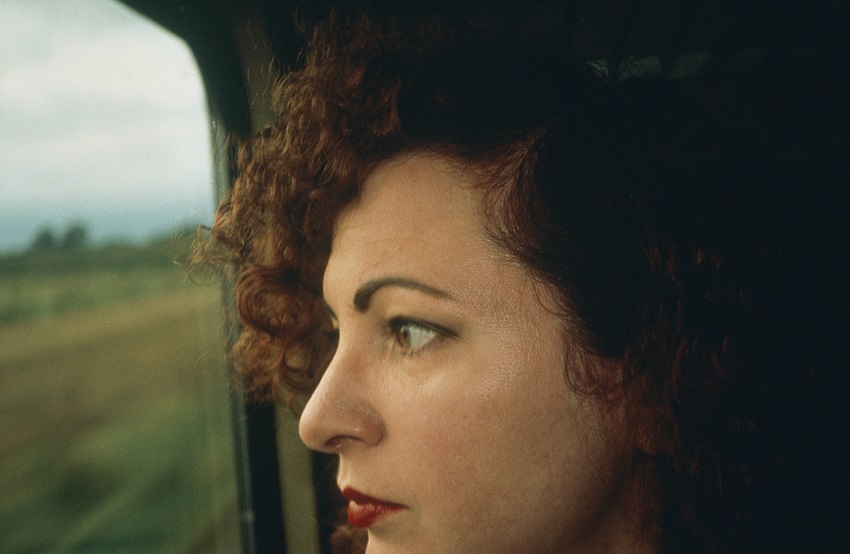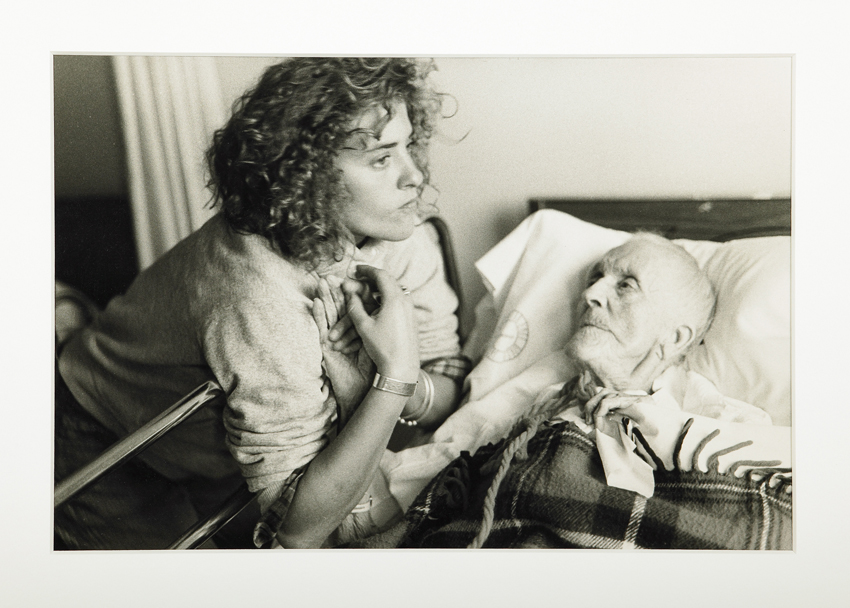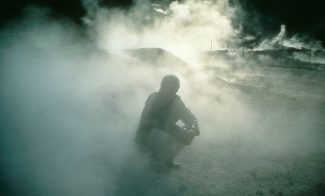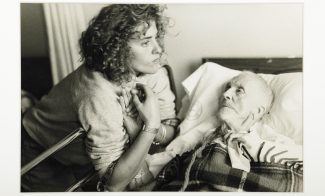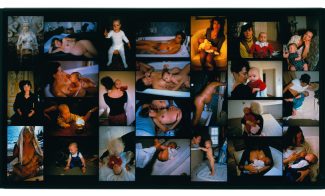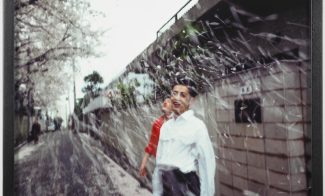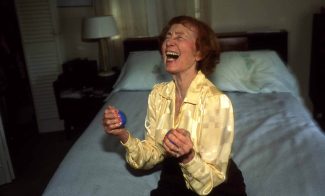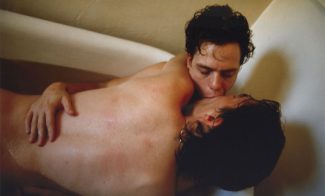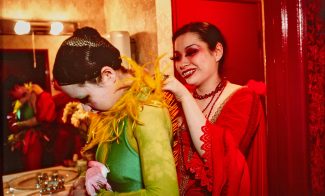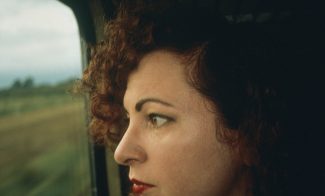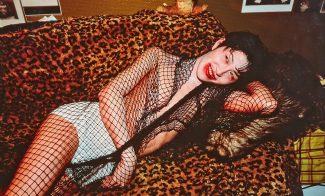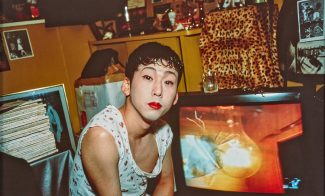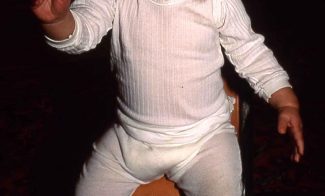For over three decades, Nan Goldin (Born 1953 in Washington D.C.) has been making documentary-style photographs of intimate moments, creating a rich trove of images of contemporary life. Most of her subjects are close friends and family members, who pose boldly and comfortably in front of Goldin’s camera.
From Here to Maternity explores the archetypal mother-child relationship through twenty-four photographs taken between 1986 and 2000. These tender and striking images of parenthood show women breastfeeding and bathing babies, and changing their diapers. The dense arrangement of images is an unusual format for the artist, who tends to display her photographic prints as independent works. Included in the assembly is a piece in the ICA/Boston collection, Ulrike, Stockholm, 1998, a portrait of an infant that is reminiscent of historical depictions of Jesus as a child. The photograph of a water fountain in Amalfi, Italy, with water spouting from a figure’s breasts, makes a connection to other iconic depictions of maternal figures. Interested in filmmaking, Goldin is known for presenting her photographs in slideshows accompanied by music. The most famous of these, The Ballad of Sexual Dependency (1985), was first exhibited at the ICA in 1985. The deliberate sequencing of From Here to Maternity is reminiscent of the slideshow format, and the title references film history by evoking the 1953 classic From Here to Eternity.
From Here to Maternity complements other works by Nan Goldin in the ICA’s collection, contributing to a fuller representation of this important contemporary artist. It builds on an impressive array of collection works by prominent contemporary photographers, including Philip-Lorca diCorcia, Rineke Dijkstra, Roe Ethridge, Noriko Furunishi, and Boris Mikhailov.
